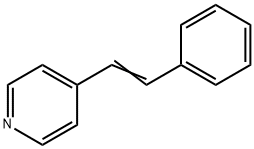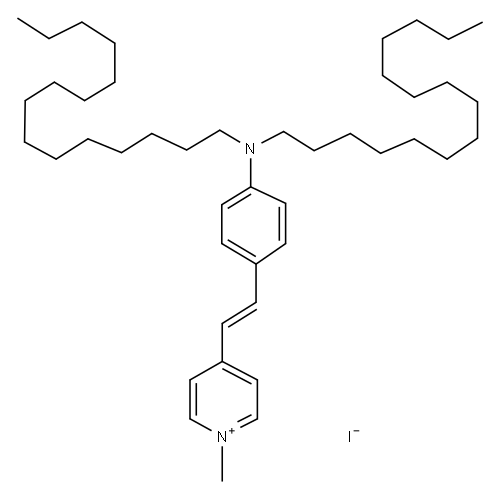4-(4-(Dihexadecylamino)styryl)-N-methylpyridiniumiodide,DiADiA , 99% , 114041-00-8
Synonym(s):
DIA;CDF;D factor;DIAPH2;Diaphanous-related formin-2
| Pack Size | Price | Stock | Quantity |
| 0.025g | RMB1720.00 | In Stock |
|
| others | Enquire |
PRODUCT Properties
| storage temp. | -20°C |
| solubility | DMSO |
| form | Solid |
| color | Brown to reddish brown |
| Appearance | red-brown solid |
Description and Uses
DiA is a dialkylaminostyryl dye that fluoresces when inserted into membranes or diluted into organic solvents. DiA’s excitation max is 492 nm, and emission max is 607 nm. Due to its broad emission spectrum, DiA can be detected in the green, orange, and red channels depending on the filter used.
DiA is widely used as an anterograde and retrograde neuronal tracer in living and fixed tissues and cells. DiA uniformly labels neurons via diffusion in the plasma membrane. In intact tissue, the dye does not transfer from labeled to unlabeled cells but some transfer may occur when the membrane is disrupted, for example after sectioning.
DiA can be used as a second-color neuronal tracer in conjunction with other neuronal tracers, for example, DiI.
4-Di-16-ASP is a green fluorescent membrane dye. 4-Di-16-ASP is a lipophilic aminostyryl probe with a broad emission spectrum (can be detected with green, orange or even red filters). It is commonly used for neuronal membrane tracing (it diffuses faster than DiO)[1].
Safety
| Symbol(GHS) |  GHS07 |
| Signal word | Warning |
| Hazard statements | H315-H319-H335 |
| Precautionary statements | P261-P305+P351+P338 |
| Hazard Codes | Xi |
| Risk Statements | 36/37/38 |
| Safety Statements | 26-36 |


![4-[4-(Dimethylamino)styryl]pyridine](https://img.chemicalbook.com/CAS/GIF/889-36-1.gif)


